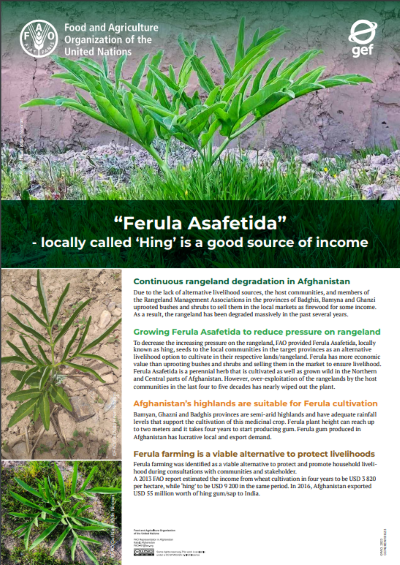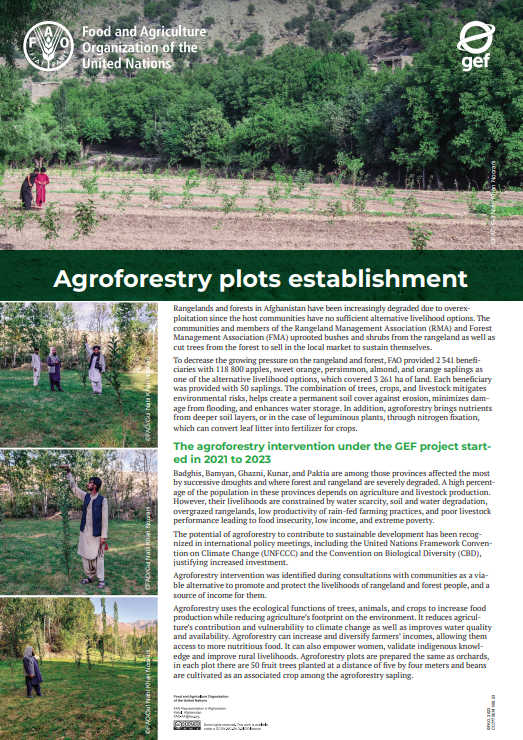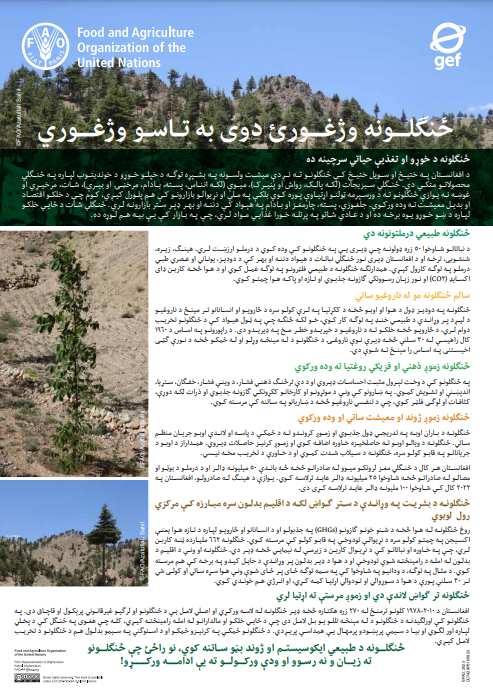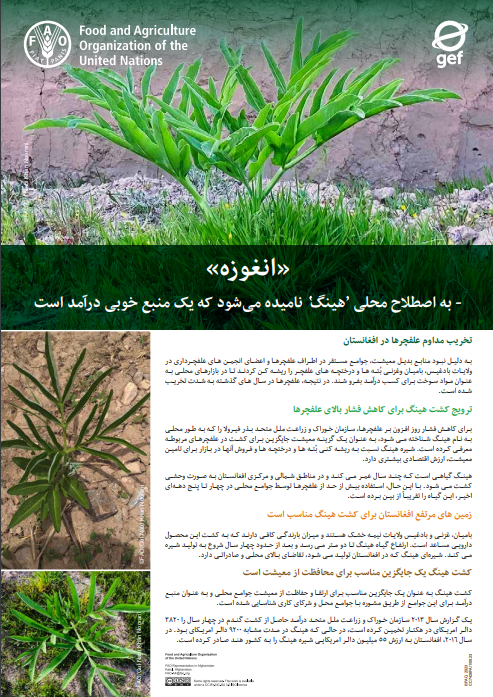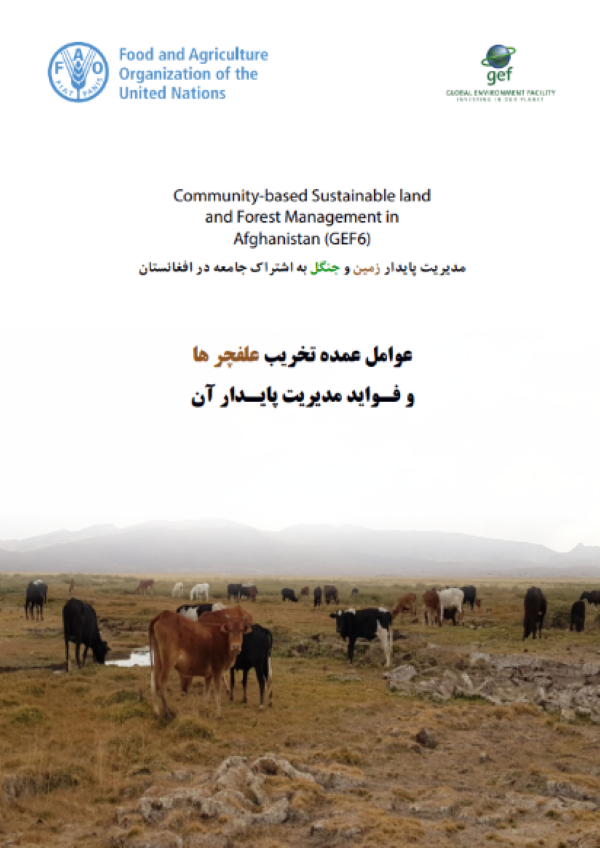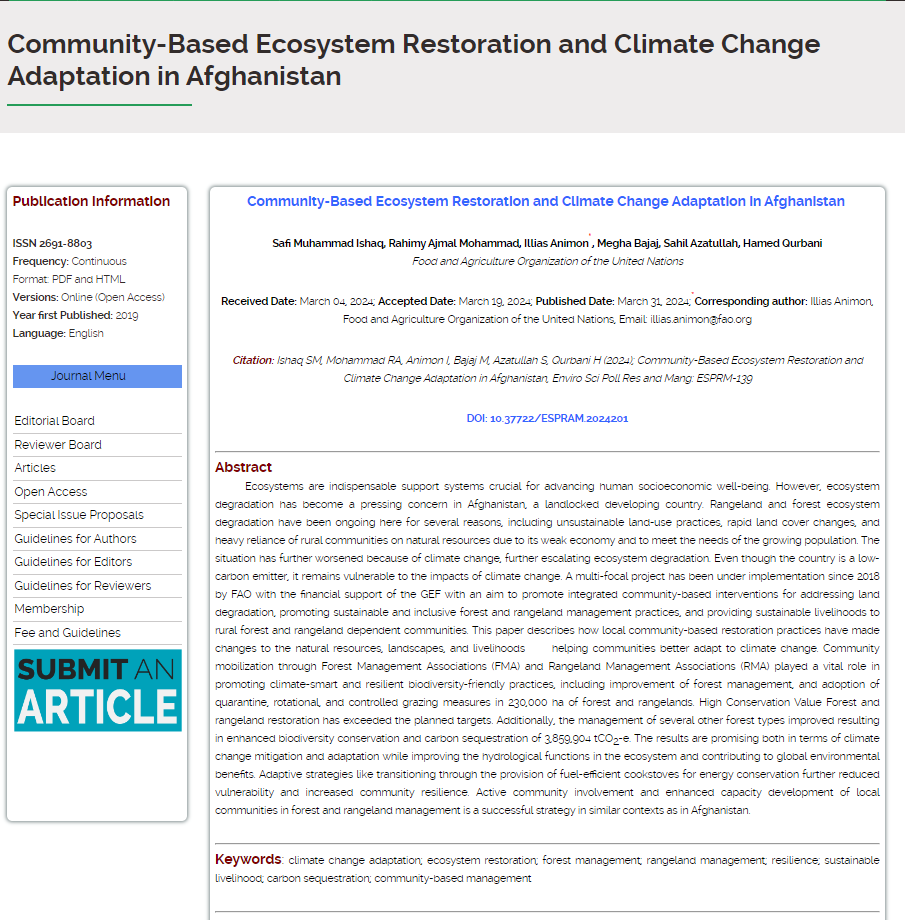Forest and Landscape Restoration Asia
FLR Afghanistan Knowledge Hub
Objective: To support integrated, community-based approaches to Sustainable land and Forest Management (SLM/SFM) in Afghanistan for promoting biodiversity conservation, climate change mitigation and rangeland productivity.
FAO GEF-6 interventions includes enhanced capacity of national and sub-national government institutions for SLM/SFM; enhanced capacity of local communities in Badghis, Bamyan, Ghazni, Kunar and Paktya provinces for developing and implementing community-based SLM/SFM plans; improved management of 10,000 ha of High Conservation‑Value Forests (HCVF) and 20,000 ha of other forest types to increase biodiversity conservation and sequester 1,530,069 tCO2e in Badghis, Paktya and Kunar provinces; improved management of 200,000 ha of degraded rangelands in order to reduce land degradation and increase biodiversity conservation and sequester 1,243,550 tCO2e in Badghis, Bamyan and Ghazni provinces.
Objective: To combat land degradation and biodiversity loss by promoting sustainable rangeland management and biodiversity conservation in vulnerable landscapes of eastern Afghanistan (Khost, Laghman, Nuristan).
FAO GEF-7 interventions aim to strengthen government and communities’ capacity to address the environmental problems by promoting sustainable rangeland management and biodiversity conservation in these vulnerable landscapes of eastern Afghanistan; improved management and restoration/rehabilitation of 24,000 ha of degraded landscapes to enhance biodiversity increase productivity and restore/rehabilitate degraded land; enhanced local capacity for processing and value-adding of rangeland/agroforestry products, generating socioeconomic benefits for women and men, to provide incentives for sustainable rangeland management and biodiversity conservation.
Resources
Featured stories
More stories
Project publications
Multiple resources published under the projects include infographics, brochures, guidelines and manuals, awareness materials and reports (both in English and Local language). This section highlights these resources which can be useful to Implement SFM and SLM.
Tweets
In 2022, 7⃣4⃣0⃣ hectares have already been reforested by @FAO with high conservation value forest species in Paktya, thanks to funding from @theGEF.
— FAO in Afghanistan (@FAOAfghanistan) June 21, 2022
1⃣7⃣6⃣,2⃣8⃣8⃣ saplings of apple, almond, pine nut and walnut trees have been planted in Ahmad Aba and Sayed Karam districts. pic.twitter.com/BRQtiO6SA4
Globally, 10 million ha – the equivalent of about 14 million football pitches – of forest were lost per year to deforestation between 2015 & 2020. Afghanistan lost 34%.
— FAO in Afghanistan (@FAOAfghanistan) March 21, 2023
1,325 ha of land has been afforested, & 133 water reservoirs were built. #IntlForestDay #GenerationRestoration pic.twitter.com/3o8RNq6JTx
Rangelands are vital to Afghanistan's food security.
— FAO in Emergencies (@FAOemergencies) September 15, 2023
But large-scale rangeland degradation has increasingly become a problem for both herders and community members.@FAO and @theGEF join forces to reduce pressure on land and boost household income.
📷 https://t.co/Px6ylpX6K7 pic.twitter.com/b5DSvgFqTr
150 greenhouses installed by @FAOAfghanistan in #Khost, #Laghman and #Nuristan with support from @theGEF. These climate-smart interventions will boost home gardening yields and provide food security for beneficiaries, chosen amongst the most vulnerable smallholders. pic.twitter.com/7wB3IByFGl
— FAO in Afghanistan (@FAOAfghanistan) July 2, 2024









.tmb-th600x400.jpg?Culture=en&sfvrsn=9aff968_1)

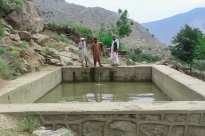
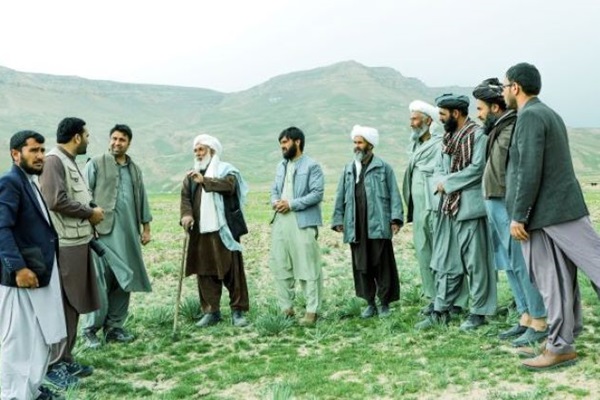

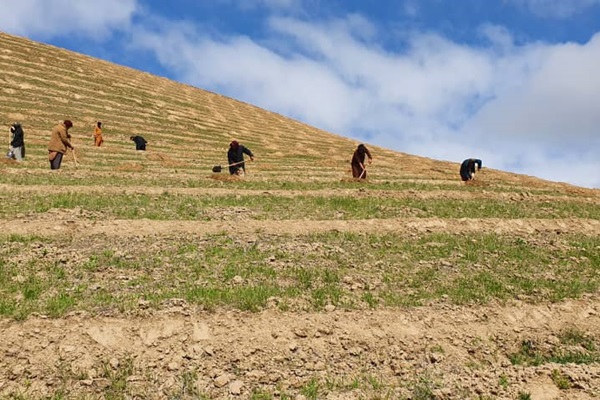
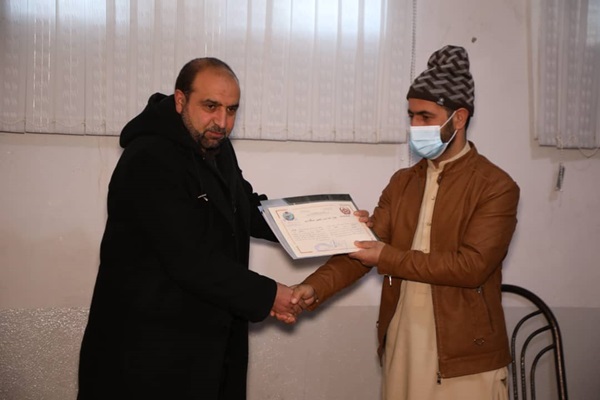
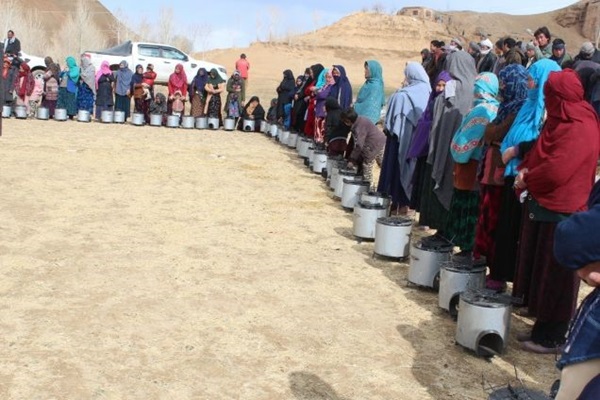
-community--based-sustainable-land-and-forest-management-in-afghanistan.tmb-th600x400.jpg?Culture=en&sfvrsn=1994e01f_1)

